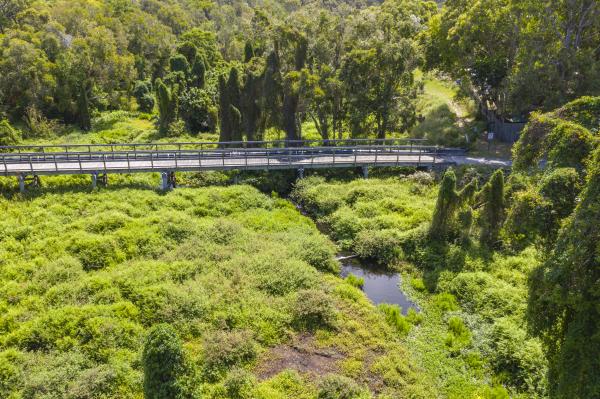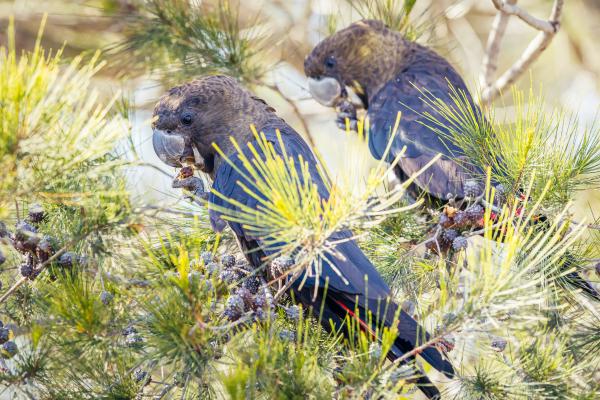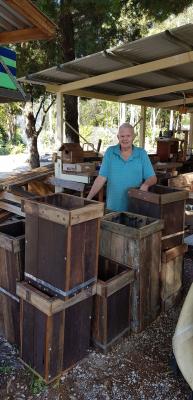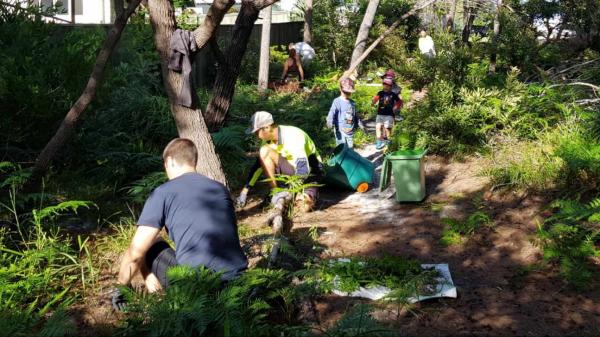
By Rose Astley
Earlier this month Noosa Landcare began work in Burgess Creek to clear and restore the area to its former glory.
The area is a known habitat for the Glossy Black Cockatoo, an endangered species that can only be found in South East Queensland and North East New South Wales.
The Burgess Creek area was once a sanctuary for the birds, but in the last 20 years or so, the area has become overrun with strangler vines that have completely covered the ground and trees.
Project organiser and Sunshine Beach resident Ben Alexander has been a driving force behind the initiative, playing an extremely active role in ensuring the restoration of Burgess Creek and Rainbow Park.
“Burgess Creek is a pretty important environment for the Noosa area, it’s the only freshwater creek that cuts through the dunes and out to sea.
“The creek is a watering hole for the Glossy’s who will sit down there to drink and feed from the native trees,” Mr Alexander said.
The initiative has attracted attention from around 200 locals who have signed up to volunteer in the project, but due to COVID-19 the community group has been put on hold until further notice.
Though the Burgess Creek Project is volunteer based, Noosa Council, Noosa Landcare and UnityWater are stakeholders in the project, with Noosa Council and UnityWater committing financially.
Community Bushland Care Officer Ryan Heeney has been an asset in educating the volunteer groups about the vital ecosystem.
“The Burgess Creek project site is recognised as potential habitat for 18 animal species that are listed as endangered, vulnerable or near-threatened.
“This includes Koalas, Powerful Owls and the iconic Glossy Black-Cockatoos, which use the site for drinking, feeding and roosting.
“The site is also potential habitat for 12 species of plants that are listed as endangered, vulnerable or near-threatened.
“It provides a significant connection between Noosa National Park and the 11km of dunal vegetation within the shire which is otherwise blocked by housing development.
“Wetland vegetation on the site cleans the water before it enters the ocean.
“Unfortunately, the site has become infested with invasive exotic plants that, if left unchecked, will completely destroy an ecosystem and eventually degrade or eliminate the above values.
Environmental Services Manager Craig Doolan said Council was pleased to support the volunteers in their efforts to improve the area.
“They’ve done a tremendous job over the past couple of years removing weeds and creating a habitat for Glossy Black-cockatoos in Rainbow Park at Sunrise Beach,” Mr Doolan said.
“They’re really keen to get stuck into weeding the Burgess Creek area and improving the habitat through there, which we’re pleased to help them with.
“As with all of our Bushland Care Program volunteers, we’re providing training, assistance and plants to support them.”
Mr Doolan said Council staff had worked with contractors to remove weeds that were choking the paperbark trees in the area.
Mr Alexander said the support from the community has been overwhelming with local community groups contributing to the project.
The Noosa Men’s Shed have built close to a dozen nesting boxes for the Glossy Black Cockatoo’s as well as roosting boxes for flying foxes out of locally sourced, recycled hardwoods.
Mr Alexander is keen to keep the momentum of the project up and hopes to launch some educational workshops for the community in the near future.
These could include weed and wildlife identification, photography workshops and native plant information sessions to help the community make their gardens more ‘native friendly’.
“Information sessions like these wouldn’t cost the community anything, but it’s about engaging people around the creek and the project,” Mr Alexander said.
Volunteer work is likely to start back up next year, in the meantime Council groups will be tackling the ‘heavy lifting’ side of the project.
To keep up to date with the initiative, details can be found on the Burgess Creek Project Facebook page or sign up to receive informative emails via the Burgess Creek Project website.








